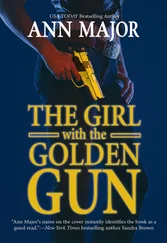Even the marketers of such books acknowledge their dangers and flaws. Mr. Lund told me he is fully aware the Cookbook’s recipes contain dangerous errors: “They’re wrong. No doubt about it.” But he added, “There are so many copies of that book extant, I don’t see how not selling another one is going to be in any way redeeming.” Billy Blann, owner of Desert Publications, said anyone who tries to act on the directions in Desert’s book The Poor Man’s James Bond takes a great risk. Most of his customers, he said, are “closet commandos” who just like to read on the wild side. “Anybody who fools with this stuff,” he said in a profound Arkansas twang, “has got to be a fool.”
Or, bomb investigators fear, a child.
That Wallingford, Pennsylvania, parent wrote to Paladin after his son received a copy of The Anarchist’s Cookbook and, while trying out one of its recipes, blew off the tip of one finger. In August 1992, two boys in Athens, Tennessee, set off two powerful bombs in a city park. In a search of one suspect’s home, investigators found The Poor Man’s James Bond , Volume II, complete with little pink Post-it notes marking crucial pages. In San Juan Capistrano, California, three young boys were seriously injured when a pipe bomb they were making in one boy’s garage exploded. Members of the Orange County bomb squad searched the boy’s home and in a freezer found a high-explosive solution made from a recipe in the Improvised Munitions Blackbook , Volume III, another book published by Billy Blann’s Desert Publications and sold by Paladin and Loompanics. “We’re talking some bad-news stuff,” said Sgt. Charles Stumph, commander of the squad. “He was just taking it through the cooling process, and he was a thirteen-year-old kid.”
Park Elliott Dietz, a forensic psychiatrist and FBI consultant in La Jolla, California, studied Paladin Press and its peers. In 1983 he set up a dummy company, Hawkeye Industries, through which he corresponded with Paladin and other companies in what he calls the “violence industry.” He used this oblique approach, he said, “because I thought these people were dangerous. Some of them are.”
He no longer placed Paladin in that category, however. “Paladin is so aboveboard in selling the worst of information for profit that there’s no need for any subterfuge with them.” His scrutiny earned him a dedication in one of Paladin’s books—George Hayduke’s Payback: Advanced Back-Stabbing and Mudslinging Techniques . Hayduke’s dedication reads, in part: “Park Baby, this book’s for you.”
Dr. Dietz estimates that he is called on to serve as a forensic psychiatrist in fifty to seventy-five criminal cases a year. When he interviews defendants, he said, he asks about the movies and TV shows they watch, the books they read. “And when one asks them,” he told me, “one learns that a large proportion of offenders of the type I’m asked to see are aware of and interested in these materials. I’ve come to expect bombers, killers using exotic weapons, mass murderers, and political-extremist offenders to have a level of familiarity with the violence industry, including Paladin Press, equivalent to the familiarity of sex offenders with pornography.”
The effect of Paladin’s books and pornography is similar, Dr. Dietz argued. “People with a preexisting interest in tying and torturing women gravitate to such pornography. People with a preexisting interest in mass destruction gravitate to titillating descriptions of that.”
His work brought him into contact with at least two multiple murderers who had read books by Paladin and its competitors: George Banks, who killed thirteen people in Wilkes-Barre, Pennsylvania, and Sylvia Seegrist, who killed three people and wounded seven in Media, Pennsylvania.
In an article in the Journal of Forensic Sciences , Dr. Dietz argued that books sold or published by Paladin—in particular the How to Kill series, Get Even , and The Poor Man’s James Bond —may have been the inspiration for the Tylenol killings of 1982 and subsequent product-tampering cases. As early as 1972, he wrote, The Poor Man’s James Bond described how cyanide could be substituted for the drugs in medicinal capsules. The first murder using cyanide in capsules occurred in 1982 in Chicago, in the Tylenol case. Nine other murders followed, six more in Chicago, three others in 1986 in Seattle and Yonkers, New York.
In 1973, Dr. Dietz’s report continued, Paladin’s How to Kill suggested adding acid to eyedrops. A few years later a pharmacist allegedly used a similar technique.
In 1981, Get Even described a novel means of contaminating a bottled drink. Four years later, someone used the approach in a Santa Clara, California, grocery store.
In 1983, Paladin’s Hit Man noted a way of tampering with tea bags to make them deadly. Four years later, Dr. Dietz wrote, a New Jersey man was convicted of placing similarly contaminated tea bags in a grocery store.
“One of the usually ignored concerns about this industry that 1 would underscore is the effect of exposure on vulnerable members of the community,” Dr. Dietz told me. “It’s the same concern that I have always emphasized ought to be foremost in our thinking about the effects of pornography. It is not relevant what effect if any either pornographic or violent materials have on college-educated, nonantisocial, non-substance-abusing, nonpsychotic persons. What is relevant is the effect on uneducated, substance-abusing, antisocial, or psychotic persons with little or no family or community control, in circumstances where they think they have no witnesses.”
In fact, he argued, vulnerable readers migrate to such material and may incorporate the “worldview” of the publication into their thinking. “My concern,” he said, “is not just that one can learn to build a better bomb this way, but also that through sufficient immersion in this subculture one comes to find a greater need to build the bomb.”
I asked Peder Lund what he thought of Dr. Dietz’s views.
“I really can’t be bothered by him,” he said. Dr. Dietz, he said, had seized on a few aberrant cases to postulate a link between Paladin’s books and crime. “If you take two hundred thousand people, statistically you’re going to find two or three who don’t wear underwear, four or five who cultivate bonsai trees, six or eight who’ve shaved their heads. There’s no statistical validity to the man’s conclusions. It’s as if you went to a party last night and met five people who were divorced and decided the divorce rate had gone up catastrophically.”
Lund dismissed Dr. Dietz’s product-tampering theory as “conjecture.” On the reports of bomb injuries from books published by Paladin and others, Lund said, “As a human, I feel very sorry for anyone who’s put through any physical suffering. As a publisher and as a pragmatist, I feel absolutely no responsibility for the misuse of information.”
Paladin is merely a vehicle for conveying information, he said. “We are not encouraging illegal activity.”
No one, at least no one I could find, has sued Paladin over the ways people put its books to use. “And I think it would be a travesty of the legal system to do so, don’t you?” Lund said. “Do you sue General Motors because a kid runs over his schoolmate in a stolen car? Do you sue the manufacturer of a hammer because a child picks it up and bashes his little sister’s head in? I can’t see any clear-thinking person holding someone responsible for conveying information.”
The U.S. Supreme Court agrees. “The general rule is, people do have a constitutional right to engage in speech which might cause serious harm or danger to others,” said Bruce Ennis, a First Amendment attorney. Speech, or a written work, can be deemed illegal only when it is virtually certain to lead a listener or reader to an immediate act of violence. “These are difficult standards to meet,” said Floyd Abrams, considered a leading expert in First Amendment law. “They are supposed to be difficult.”
Читать дальше
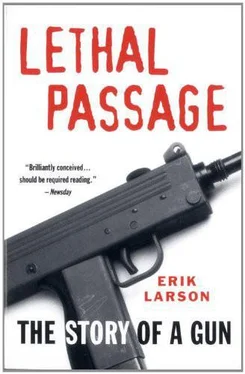
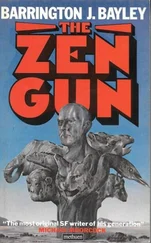


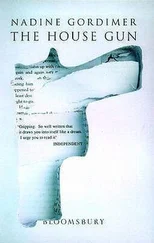

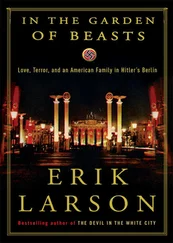

![Ричард Деминг - Whistle Past the Graveyard [= Give the Girl a Gun]](/books/412176/richard-deming-whistle-past-the-graveyard-give-t-thumb.webp)
